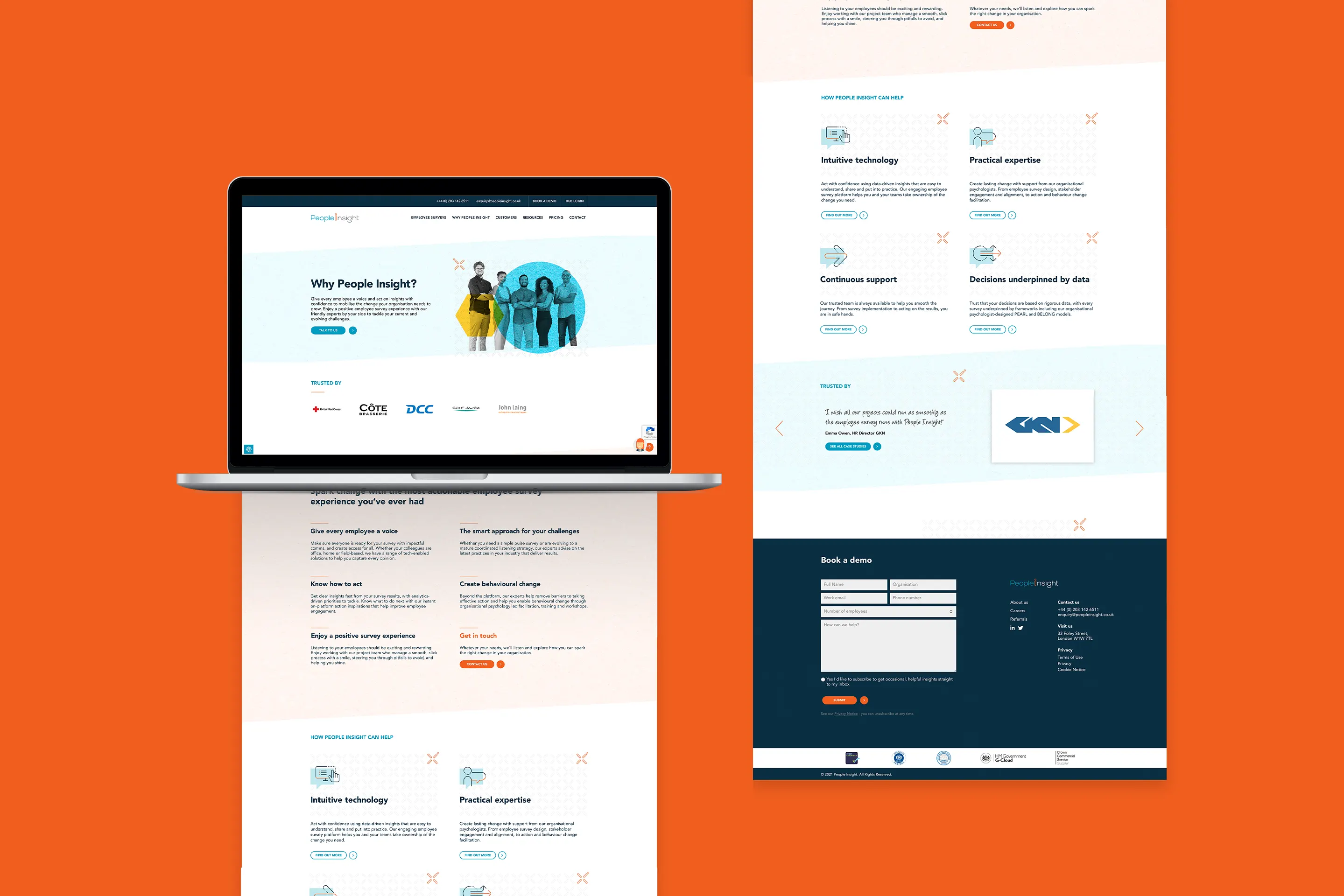Landing pages are a digital marketing staple, you only have to Google the stats to see there is clearly no doubt they are a valuable component of any marketing strategy, but what exactly is a landing page? And how do you create a good one?
What is a landing page?
A landing page can be defined as a stand alone page on your website that has a specific purpose. Most often, it is created as part of a marketing campaign, with a single CTA to ensure visitors convert.
They differ from standard website pages in their single mindedness. Your website pages are designed to support exploration and onward journeys. A landing page is purposely designed to keep visitors in the sales funnel.
There are two key types of landing page:
- Lead generating landing pages feature a data capture form. Something valuable is offered in exchange for data; e.g. an offer, download, free trial, etc.
- Click-through landing pages act as a ‘staging area’ between the ad the final destination. This provides an opportunity to further validate your audience. Why do they need to take action. You can also work out how to drive onward traffic to the final destination. A shopping cart is a good example.
However, it’s also important to distinguish between a PPC landing page and an SEO optimised landing page.
Before attempting to optimise a landing page for both SEO and PPC, you must consider your desired outcome. Despite having the same underlying purpose, they each accomplish different objectives. Doing so will ensure that your efforts are not wasted as you strive towards achieving your goals.
SEO is focused on producing content that meets a visitors search intent. It also often benefits from internal linking to other relevant content.
PPC on the other hand, is laser focused on getting your visitor to convert, with simple, bold headers and concise messages. More often than not, marketers choose to deploy separate PPC and SEO optimised landing pages to meet different marketing objectives.
What’s the key to a good landing page?
A good landing page is focused on a single conversion goal. This could be anything from making a purchase, signing up for a newsletter, downloading content or requesting more information. Landing pages allow you to control what content is displayed on the page and limit other distractions, for example a key tactic is to remove the main site navigation to focus the visitor.
Other key considerations include:
- Aligning your content with the goals of the ad.
- Putting your CTA above the fold.
- Adding social proof in the form of testimonials and case studies.
- Ensuring your pages are mobile friendly and load quickly.
- Simplifying your forms as much as possible.
- Testing your CTA and copy.
- Creating a thank you page.
How to create a successful landing page
Creating a successful landing page involves writing compelling content that focuses on the needs of your target market; designing the page so it’s easy to navigate; and creating effective calls-to-action that encourage users to take action on your website.
Headline
It will have a clear and concise headline that tells the visitor what they can expect to find on the page. The headline should be followed by a short description of what’s on the page and why it’s relevant to the visitor.
The page should then contain several images or videos (depending on the type of product or service being promoted) and a list of benefits that the visitor can expect to receive by taking action.
Call-to-action
The page should also contain a strong call-to-action (CTA) that encourages the visitor to take the next step, whether it’s to buy a product, sign up for a free trial, or request more information. The CTA should be big, bold and easy to find.
Lead form
The final element of a good landing page is a form that collects contact information from the visitor so you can follow up with them later. The form should be short and sweet, asking for only the essential information, such as name, email address, and phone number.
With a PPC only landing page, the general rule of thumb is to create the page as ‘noindex’, which tells Google not to include the page in search. This is important as pages that are deemed ‘orphaned’ from the main site (as they don’t feature in the navigation) can be detrimental to your site-wide SEO efforts. There is also a danger of ‘duplication’ if you are optimising an SEO landing page for similar terms.
When optimising a landing page for SEO, you need to start with conducting keyword research around the key topic, promotion or service. Once you have a refined set of keywords you can build your content around these, but ensure you focus on creating useful content for the audience and not for search engines! They are smarter than you think and can easily identify spam content.
Once you have the basis of your content use tools such as Semrush or Yoast (a WordPress plugin) to gain further optimisation ideas, such as types of media to include, suggested word count and semantic keywords to weave into your copy.
Lastly, and most importantly, how are you going to get visitors to your landing pages? Think have expanded on this topic in our blog post How to drive traffic to your landing page.
The benefits of a good landing page
A well-designed, effective landing page will do two things:
- It will persuade the visitor to take action
- It will collect information about the visitor for follow-up purposes
Landing pages can build credibility with your audience by focusing on messaging that meets their needs quickly and effectively. It also helps you target traffic and build a sales pipeline of interested prospects. What’s not to like?
However, taking the time to perfect the copy and craft your page is essential. As such, make sure you experiment, continually adjusting page content and ad copy based on web analytics results.
Good luck and if you need help with creating lead generating landing pages, please get in touch to get the ball rolling.

